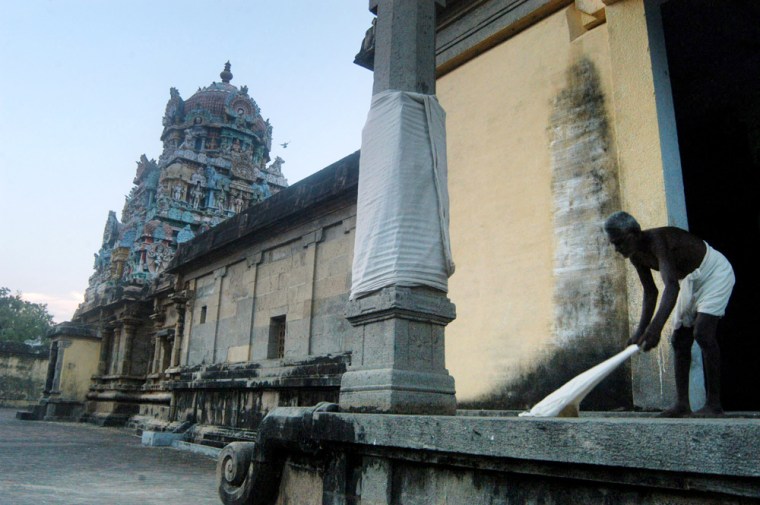For generations, the people of Poompuhar have spoken of the days when their sleepy fishing town was the capital of a powerful kingdom, and traders came from Rome, Greece and Egypt to deal in pearls and silk.
Then, more than 1,500 years ago, it was gone. The thriving town, according to ancient Tamil-language texts, was "kodalkol" -- "swallowed by the sea."
Perhaps, archaeologists and historians thought, the sea water had gradually risen. Or, some think now, perhaps it was something else.
"Nobody knew what had happened," said Murugaiyan, a 38-year-old fisherman whose family has long talked of the vanished kingdom. But on Dec. 26, when the tsunami struck, he says it all became clear.
"Now I know," he said. "It must have been another tsunami."
At least 170 people died in Poompuhar in last month's tsunami. More than 150,000 other people died across nearly a dozen countries -- the deadliest tsunami since the one caused by the 1883 volcanic eruption at Krakatoa in Indonesia which killed an estimated 36,000 people.
The toll in Poompuhar would have been worse, except that most of the fishermen had pulled their boats to shore when the waves appeared.
"The sea was unusually calm. Then we saw the sea rising suddenly and we knew something was terribly wrong. We started running," Murugaiyan said. Most of the dead in Poompuhar were women and children, including four of Murugaiyan's relatives.
He survived by clinging to a coconut tree.
He believes the town's past is echoed in what it's going through now.
"My grandfather used to say our town was taken by the sea. His grandfather told him there was a big town long, long ago -- very rich, very beautiful," said Murugaiyan, who like many south Aisans uses only one name.
Ancient city lies underwater
Poompuhar was the capital of the Chola rulers, a Tamil dynasty with a recorded history dating to the second century B.C. It was a place where silk merchants and grain traders set sail for the Far East, Greece and Egypt, archaeologists say.
The town had special enclaves for foreign visitors and the king's soldiers. In the streets, languages could be heard from around the world. It was dotted with temples, a sign of a prosperous Hindu kingdom.
But the ancient city now lies under water about two miles offshore. All that remains are a few temples and the modern town, which consists of about 2,000 fishing families.
Undersea excavations and studies by historians show that Poompuhar grew during the reign of Karikal Cholan, the second-century Chola king who established trade ties with China, Arabia and the Roman Empire.
Remnants of brick buildings, water reservoirs, a boat jetty and Roman coins have been found during undersea excavations.
The archaeologists' findings are supported by ancient Tamil literature, which has frequent references to Poompuhar.
"The description we have in our ancient literature is that it was a bustling port town," said S. Jayadevan, professor of Tamil Studies at Madras University. "The Romans would come here to buy pearls. They would bring the Arabs," Jayadevan said. "There was also trade in spices and silk."
It's not clear when the town was submerged, though most estimates put it somewhere between the third and sixth centuries.
"There is a break in Tamil history during this period. We believe we were under foreign rule," said M. Rajendran, director of Tamil Sangappalgai, a government-funded group researching Tamil Nadu's ancient history and literature.
There are references to Poompuhar in literature written after the ninth century, but none mention the grandeur described in earlier writings.
Last month's tsunami has historians and archaeologists calling for new research into the coastal civilizations of ancient India, and the possible affect of earlier giant waves.
"The Dec. 26 tsunami has added a new dimension," said Rajendran. "Previously, archaeologists in our country never factored this into their work."
